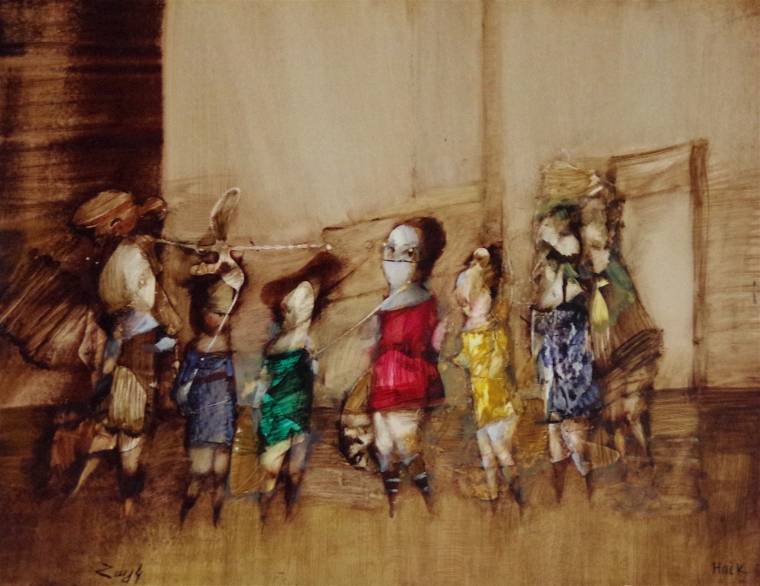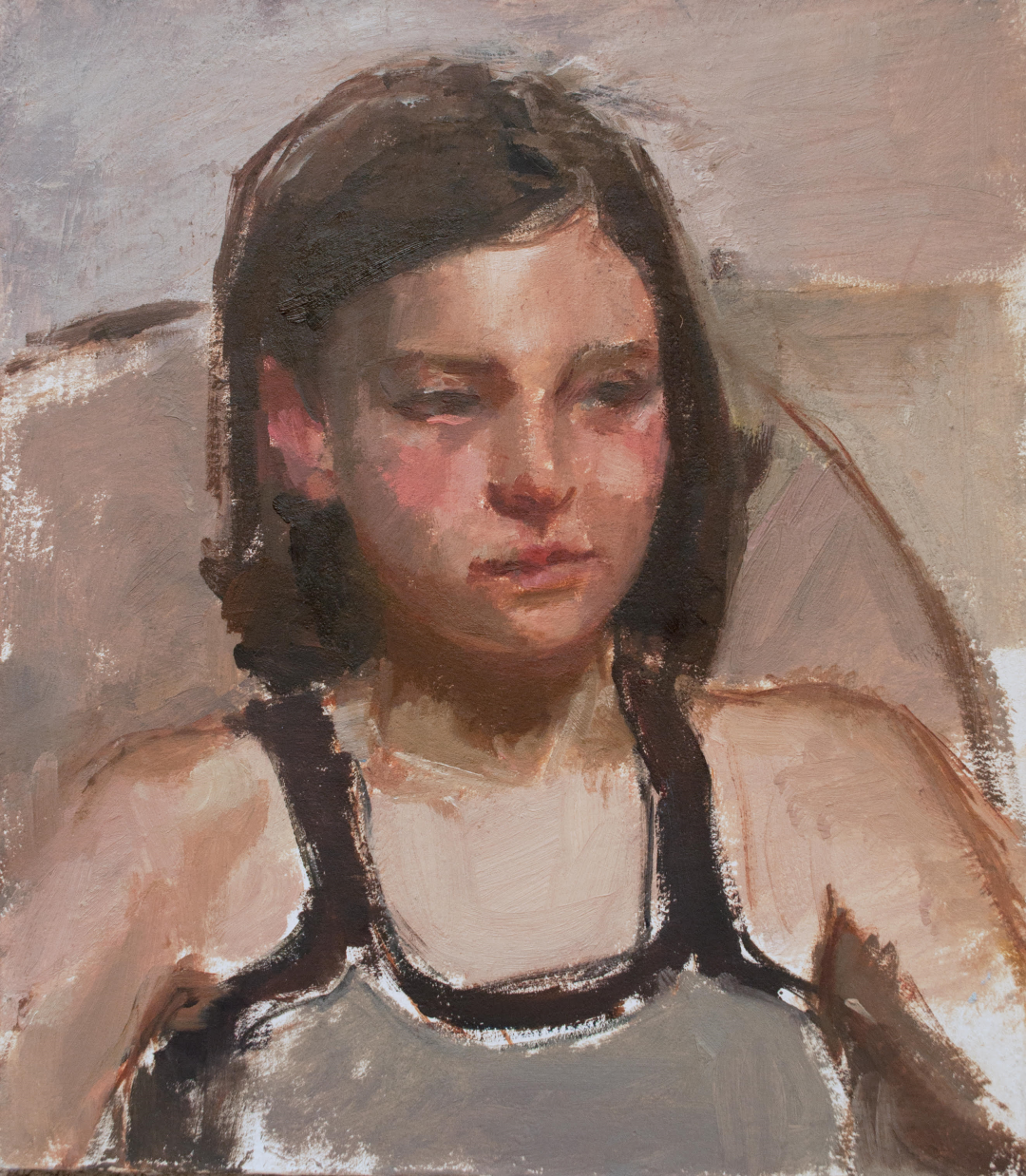Discovering the Depths of Feeling with Figurative Oil Painting Strategies
Discovering the Depths of Feeling with Figurative Oil Painting Strategies
Blog Article
The Role of Feeling and Expression in Figurative Oil Painting: An In-Depth Evaluation of Subject Matter and Make-up
The interaction of emotion and expression in figurative oil painting serves as a crucial lens where one can check out the detailed partnership in between topic and make-up. Artists harness various techniques, from shade selection to brushstroke dynamics, to cultivate emotional resonance within their works. This nuanced orchestration not just shapes visitor perception yet also welcomes a deeper query into just how these aspects integrate to mirror the complexities of human experience. As we discover this rich terrain, one have to think about just how particular instance studies light up the more comprehensive effects of these imaginative options.
Recognizing Emotion in Art
Emotion in art serves as an effective conduit for expression, permitting musicians to share complicated sensations via their work. In figurative oil paint, this emotional depth is often represented through the representation of the human number, catching the subtleties of human experience. The option of subject, color scheme, and brushwork all add to the emotional vibration of an item.
Artists regularly attract upon individual experiences, societal concerns, or global styles to stimulate feelings in the visitor. A portrait might show susceptability, while a dynamic figure in movement can signify freedom or chaos. These psychological strings attach the audience to the artwork, cultivating a dialogue that transcends the aesthetic tool.
Moreover, the interaction in between light and darkness can amplify psychological intensity, leading the viewer's look and accentuating specific aspects within the make-up. Making use of texture in oil paint further adds layers of complexity, welcoming a responsive action that improves the psychological experience. Overall, understanding emotion in art is essential for valuing the nuances that characterize figurative oil painting, as it transforms simple representation into an extensive exploration of the human problem.
Crucial Element of Make-up
In the world of figurative oil painting, the make-up offers as the underlying framework that arranges aesthetic elements and improves the psychological story. Necessary components of make-up consist of equilibrium, contrast, prime focus, and rhythm, each contributing to the total influence of the artwork.
Equilibrium refers to the circulation of aesthetic weight within the painting, which can be accomplished with symmetrical or unbalanced setups. A healthy composition offers stability, enabling the visitor to engage with the item harmoniously - figurative oil painting. Contrast, on the various other hand, entails juxtaposing various components, such as light and dark or cozy and great colors, to assist the audience's eye and evoke emotional feedbacks
The focal factor is vital, as it directs interest to the most significant component of the paint, commonly highlighting the psychological core of the narrative. By masterfully integrating these vital elements, artists can craft engaging and psychologically resonant figurative oil paintings that mesmerize and involve their audience.
Topic and Its Effect
Subject plays a crucial role in metaphorical oil painting, as it not only offers as the structure for the story but likewise forms the visitor's analysis and emotional interaction with the art work. The option of subject issue-- be it a singular number, a team dynamic, or a try here thematic representation-- straight affects the emotional environment shared to the target market.

For circumstances, pictures usually stimulate individual links, exposing the ins and outs of human expression and character, while scenes illustrating common activities can create a sense of belonging or nostalgia. Additionally, the social and historic context of the subject issue enhances the audience's understanding, motivating deeper reflections on social standards, worths, and the human condition.
Different subjects likewise produce differing levels of engagement; a significant problem illustrated through numbers in tension might elicit feelings of anxiousness or compassion, while serene landscapes can invoke harmony and reflection. Eventually, the impact of subject in metaphorical oil paint is extensive, as it serves as a channel for emotional vibration, directing the visitor's reaction and analysis, and fostering a connection between the art work and the viewer. This interplay is essential for the successful interaction of the musician's intent.
Techniques for Evoking Sensations
The effectiveness of figurative oil painting in conveying feelings is significantly affected by the methods used by the artist. Among the most vital methods is using shade concept, where the critical selection of shades can stimulate particular psychological actions. Warm colors, such as reds and oranges, often evoke feelings of passion or aggressiveness, while cooler tones like blues and a fantastic read eco-friendlies have a tendency to stimulate peace or despair.
Another essential method is the control of light and shadow, called chiaroscuro. This approach improves the three-dimensionality of figures, producing remarkable contrasts that can magnify psychological depth. The positioning of light can lead customers' emotions, highlighting certain aspects of the structure.
Brushwork also plays a crucial function; loose, expressive strokes can communicate power and spontaneity, whereas smoother techniques could suggest harmony or precision. Moreover, the arrangement of topics within the make-up can influence emotional impact. Close distance can recommend intimacy, while range may suggest seclusion.
Eventually, the combination of these methods allows artists to craft narratives that resonate with the viewer, changing a plain visual experience into an expressive emotional trip. - figurative oil painting

Study of Notable Works
Checking out noteworthy jobs of figurative oil paint reveals how various techniques are employed to stimulate powerful emotions. One excellent situation is Edvard Munch's "The Scream," where the altered figure and swirling background share existential dread. Munch's use of color-- deep blues and vivid oranges-- intensifies the psychological impact, showcasing exactly how scheme choices can shape customer experience.
One more substantial work is Pablo Picasso's "Les Demoiselles d'Avignon." Below, strong brushstrokes and fragmented types mirror a troubled emotional landscape, challenging traditional representations of the female number. Picasso's cutting-edge structure not only records the audience's interest however additionally welcomes contemplation on motifs of identity and sexuality.
Additionally, Frida Kahlo's "Both Fridas" offers a touching exploration of duality and self-identity. The contrasting numbers, linked by a shared heart, exhibit web link Kahlo's emotional deepness and individual narrative. figurative oil painting. Her meticulous attention to detail and symbolic elements serve to engage visitors on a natural degree
These study underscore the profound link between emotion and composition in metaphorical oil paint, disclosing how musicians harness method to communicate complicated sensations and narratives that reverberate throughout time and culture.

Conclusion
To conclude, the interplay of feeling and expression in figurative oil paint substantially improves the visitor's experience and interpretation of the artwork. Via a cautious option of subject and compositional strategies, artists share profound narratives that resonate on both individual and global degrees. The application of color brushwork, chiaroscuro, and concept additional amplifies emotional depth, changing each canvas into an effective representation of the intricacies of the human experience.
In figurative oil paint, this psychological deepness is frequently depicted via the representation of the human number, recording the subtleties of human experience.Furthermore, the interplay in between light and darkness can amplify emotional strength, directing the viewer's stare and attracting attention to particular elements within the structure. The use of appearance in oil paint better adds layers of complexity, inviting a responsive response that enhances the emotional experience.The focal factor is critical, as it directs focus to the most substantial component of the paint, often highlighting the emotional core of the narrative. Eventually, the effect of subject issue in metaphorical oil paint is profound, as it serves as a channel for emotional resonance, directing the audience's reaction and analysis, and fostering a link in between the observer and the artwork.
Report this page